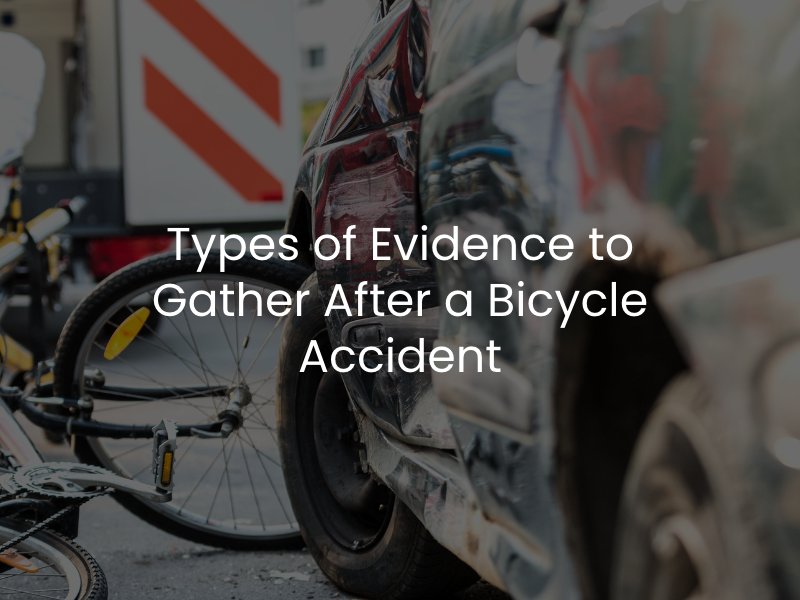What Evidence Will We Need to Prove My Bike Injury Claim?
After a bicycle accident occurs, you may be able to receive compensation if the incident was caused by someone else. However, recovering compensation means you have to prove liability (fault) for the incident. If you have been harmed in a bicycle crash, we encourage you to seek a free consultation with an attorney so you can tackle all possible avenues of recovering money for your losses. (Ambien online)
Types of Evidence to Gather After a Bicycle Accident
Depending on the situation, there may be a range of types of evidence you can use to prove your bike injury claim. In general, the following types of evidence can be helpful:

- Police report. Immediately after the accident, it is crucial to contact the police and file a report. An official police report will provide a neutral and detailed account of the incident, often including witness statements, the names of all involved parties, and the officer’s assessment of fault.
- Witness statements. Witnesses to the crash can provide invaluable testimony to support your claim. Your attorney can help locate witnesses and obtain their statements, which could corroborate your version of events and establish the other party’s negligence.
- Medical records and bills. Seek medical attention promptly after the crash and follow through with your treatment plan. Keep all documentation of injuries, including emergency room records, physician notes, and rehabilitation or therapy bills. These records can help establish the extent of your injuries and the associated costs.
- Photographs and videos. Visual evidence is particularly compelling. Capture photographs of the collision scene, your injuries, and the damage to your bicycle. Videos from nearby security or traffic cameras may also be useful in showing how the incident occurred.
- Bicycle and equipment. Retain the damaged bicycle and any safety equipment you were using at the time of the crash, such as a helmet. These items can provide crucial clues about the severity of the impact and the at-fault driver’s negligence.
- Bike computer or GPS device data. Many cyclists use bike computers or GPS devices to track their rides. These devices can record useful data like speed, direction, and location at the time of the accident. Providing your attorney with this information may help verify your account.
- Driver and insurance information. Obtain the at-fault driver’s contact details, insurance information, and license plate number. This information is essential for making an insurance claim or pursuing legal action.
- Expert testimony. In complex cases, expert testimony from accident reconstruction specialists, medical professionals, or cycling safety experts may strengthen your claim by explaining the technical aspects of the accident and how negligence played a role.
- Loss of income records. If your injuries prevented you from working, you may be entitled to compensation for lost wages. Keep records of your income before the accident, any time you took off work due to injuries, and letters from your employer to validate your absence.
Working With Your Attorney to Build a Strong Case
We strongly encourage you to contact an attorney to help with your bike accident claim. After gathering all available evidence, your attorney will:
- Analyze evidence. Review and evaluate all collected materials to determine the strength of your injury claim and identify any additional evidence needed.
- File legal documents. Ensure all necessary legal paperwork is completed accurately and filed on time.
- Negotiate with insurers. Represent your best interests when negotiating with insurance companies and opposing parties.
- Represent you in court. If necessary, present your case before a judge or jury to obtain the compensation you deserve.
Your bicycle accident lawyer in Sacramento can walk you through this process and help give you Peace of Mind moving forward.